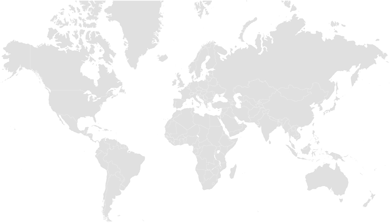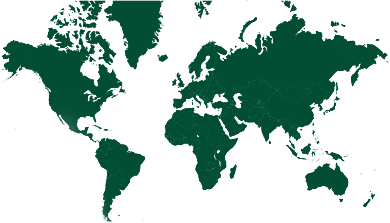Software
2024 • International Water Association (IWA) ECAM – Energy Performance and Carbon Emissions Assessment and Monitoring Tool
The ECAM Tool is a free, open-source web-based platform for assessing greenhouse gas (GHG) emissions and energy performance in water and wastewater systems. Developed under the WaCCliM project by Catalan Institute for Water Research (ICRA), International Water Association (IWA), Cobalt Water Global and Deutsche Gesellschaft für Internationale Zusammenarbeit (GIZ) GmbH, it provides utilities with a robust methodology based on IPCC guidelines to quantify emissions, identify energy-saving opportunities, and promote resource recovery, particularly from wastewater treatment processes. ECAM supports decision-making, scenario modelling, and performance monitoring, making it a valuable tool for achieving climate mitigation goals in the water sector. The tool is applicable globally and suitable for water and wastewater utilities, planners, and operators. Outputs include GHG emissions reports, Sankey diagrams for resource flows, and customized mitigation analyses.
Recovered Materials & Products
Electricity
Heat
Biogas
Energy
Nutrients
Compost
Soil conditioner
Waste Streams
Faecal sludge
Wastewater
Wastewater sludge
Sewage sludge
Confirmed countries
Global


What is this tool intended for?
ECAM is intended to help water and wastewater utilities assess, monitor, and reduce GHG emissions and energy consumption across the entire urban water cycle. It identifies opportunities for mitigation strategies, including energy efficiency improvements and resource recovery initiatives such as biogas production.
How does this tool work?
ECAM uses methodologies based on the IPCC Guidelines for National Emission Inventories, to calculate emissions and energy use across water supply and sanitation systems. Water supply is broken down into abstraction, treatment, and distribution stages, while sanitation includes collection, treatment, and onsite sanitation. Users input parameters like water volumes, energy consumption, treatment processes, and biogas recovery data. The tool then calculates direct and indirect emissions and visualizes the results through tables, charts, and Sankey diagrams. ECAM can compare baseline performance with alternative scenarios, allowing utilities to identify mitigation pathways and energy-saving opportunities.
Who might use this tool and with which types of stakeholders?
The tool is designed for water and wastewater utilities to improve performance monitoring and climate action planning. Regulatory agencies can use it for tracking emissions and energy efficiency progress. Consultants and planners involved in water and sanitation projects benefit from its analytical insights. Researchers and policymakers can apply the tool for strategic planning and the development of climate-resilient water systems.
What stages of a process can this tool support?
ECAM supports baseline assessment, providing an initial GHG and energy performance benchmark. It enables scenario analysis to evaluate potential mitigation measures and energy-saving strategies. For monitoring and reporting, it helps utilities track emissions reductions over time and compare outcomes. The tool also aids decision-making by identifying critical areas for intervention, supporting infrastructure upgrades, and promoting resource recovery strategies.
What skills, capabilities, and resources are required to use this tool?
Users need a basic understanding of water and wastewater systems and GHG accounting principles to input data and interpret the results effectively. Familiarity with energy performance metrics and IPCC guidelines is beneficial. Successful implementation relies on access to operational data, including energy use, treatment processes, and biogas recovery volumes. The tool includes manuals and training resources to support users.
Where can this tool be used?
The tool is globally applicable and can be used in urban, peri-urban, and rural water and sanitation contexts. It is suitable for both high-resource and low-resource utilities, making it relevant for a wide range of operational and geographical settings.
Case examples of where this tool has been used
ECAM has been applied to utilities in countries like Jordan and Thailand, where resource constraints often pose challenges for implementing climate mitigation strategies. In these cases, the tool helped establish baseline performance, identify emission hotspots, and evaluate energy-saving measures such as biogas recovery from wastewater treatment processes. Scenario examples highlight its ability to assess processes like water abstraction, wastewater treatment through lagoons, and sludge management through anaerobic digestion.
Get the Tool
ECAM is a free and open source tool. It can be accessed via a browser at the link below.
https://climatesmartwater.org/ecam/
Learn more
Download the ECAM User Manual (2022 version)
https://climatesmartwater.org/ecam/frontend/docs/giz/UserManual_FinalVersion.pdf
Download the ECAM Methodology Guide
https://climatesmartwater.org/ecam/frontend/docs/giz/MethodologyGuide_FinalVersion.pdf
Access the ECAM Github repository
https://github.com/icra/ecam
Access a selection of ECAM video tutorials
https://www.youtube.com/watch?v=vLDfAOBy1sw&list=PL6u1Pjpf8O0Ymz7bLlOCkLTJWHyPReOxP
Technologies
Anaerobic digestion
Constructed wetlands
Activated sludge
Lagoons
Trickling filters
Upflow anaerobic sludge blanket reactors
Anaerobic reactors
Coarse solids reductors
Aeration basin
Fixed bed bioreactors
Anaerobic baffled reactors
Tertiary filtration
Air and steam stripping
Themes
Monitoring, Evaluation and Learning
Capacity building
GHG emissions
Operation and maintenance